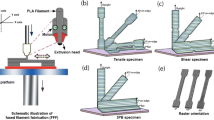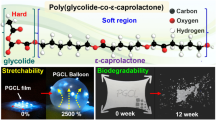Abstract
Background: The ring-pull test, where a ring of tissue is hooked via two pins and stretched, is a popular biomechanical test, especially for small arteries. Although convenient and reliable, the ring test produces inhomogeneous strain, making determination of material parameters non-trivial. Objective: To determine correction factors between ring-pull-estimated and true tissue properties. Methods: A finite-element model of ring pulling was constructed for a sample with nonlinear, anisotropic mechanical behavior typical of arteries. The pin force and sample cross-section were used to compute an apparent modulus at small and large strain, which were compared to the specified properties. The resulting corrections were validated with experiments on porcine and ovine arteries. The correction was further applied to experiments on mouse aortic rings to determine material and failure properties. Results: Calculating strain based on centerline stretch rather than inner-wall or outer-wall stretch afforded better estimation of tissue properties. Additional correction factors were developed based on ring wall thickness H, centerline ring radius Rc, and pin radius a. The corrected estimates for tissue properties were in good agreement with uniaxial stretch experiments. Conclusions: The computed corrections improved estimation of tissue material properties for both the small-strain (toe) modulus and the large-strain (lockout) modulus. When measuring tensile strength, one should minimize H/a to ensure that peak stress occurs at the sample midplane rather than near the pin. In this scenario, tensile strength can be estimated accurately by using inner-wall stretch at the midplane and the corrected properties.












Similar content being viewed by others
Notes
The large-strain portion of the stress-strain curve is often called the linear regime, but we use lockout in this work to avoid confusion with linear material models.
References
Macrae RA, Miller K, Doyle BJ (2016) Methods in mechanical testing of arterial tissue: a review. Strain 52:380–399. https://doi.org/10.1111/str.12183
Clark TE, Lillie MA, Vogl AW, Gosline JM, Shadwick RE (2015) Mechanical contribution of lamellar and interlamellar elastin along the mouse aorta. J Biomech 48:3599–3605. https://doi.org/10.1016/j.jbiomech.2015.08.004
Clark TE (2013) Stiffness of mouse aortic elastin and its possible relation to aortic media structure. Dissertation, University of British Columbia, Vancouver, CA. https://doi.org/10.14288/1.0073921
Vouyouka AG, Pfeiffer BJ, Liem TK, Taylor TA, Mudaliar J, Phillips CL (2001) The role of type I collagen in aortic wall strength with a homotrimeric [α1(I)]3 collagen mouse model. J Vasc Surg 33:1263–1270. https://doi.org/10.1067/mva.2001.113579
Pillekamp F, Halbach M, Reppel M, Rubenchyk O, Pfannkuche K, Xi JY, Bloch W, Sreeram N, Brockmeier K, Hescheler J (2007) Neonatal murine heart slices. A robust model to study ventricular isometric contractions. Cell Physiol Biochem 20:837–846. https://doi.org/10.1159/000110443
Yoshida K, Mahendroo M, Vink J, Wapner R, Myers K (2016) Material properties of mouse cervical tissue in normal gestation. Acta Biomater 36:195–209. https://doi.org/10.1016/j.actbio.2016.03.005
Watters DAK, Smith AN, Eastwood MA, et al (1985) Mechanical properties of the colon: comparison of the features of the African and European colon in vitro
Heys J, Barocas VH (1999) Mechanical characterization of the bovine iris. J Biomech 32:999–1003. https://doi.org/10.1016/S0021-9290(99)00075-5
Krag S, Andreassen TT (1996) Biomechanical measurements of the porcine lens capsule. Exp Eye Res 62:253–260. https://doi.org/10.1006/exer.1996.0030
Shazly T, Rachev A, Lessner S, et al On the Uniaxial Ring Test of Tissue Engineered Constructs. https://doi.org/10.1007/s11340-014-9910-2
Girton TS, Oegema TR, Grassl ED, Isenberg BC, Tranquillo RT (2000) Mechanisms of stiffening and strengthening in media-equivalents fabricated using glycation. J Biomech Eng 122:216–223. https://doi.org/10.1115/1.429652
Humphrey JD (2002) Cardiovascular solid mechanics. Springer New York
Van Haaften EE, Van Turnhout MC, Kurniawan NA (2019) Image-based analysis of uniaxial ring test for mechanical characterization of soft materials and biological tissues. Soft Matter 15:3353–3361. https://doi.org/10.1039/c8sm02343c
Sokolis DP (2007) Passive mechanical properties and structure of the aorta: segmental analysis. Acta Physiol 190:277–289. https://doi.org/10.1111/j.1748-1716.2006.01661.x
Stoiber M, Messner B, Grasl & C, et al A Method for Mechanical Characterization of Small Blood Vessels and Vascular Grafts. https://doi.org/10.1007/s11340-015-0053-x
Rahn DD, Ruff MD, Brown SA et al (2008) Biomechanical properties of the vaginal wall: effect of pregnancy, elastic fiber deficiency, and pelvic organ prolapse. Am J Obstet Gynecol 198:590.e1-590.e6. https://doi.org/10.1016/j.ajog.2008.02.022
Maas SA, Ellis BJ, Ateshian GA, Weiss JA (2012) FEBio: finite elements for biomechanics. J Biomech Eng 134:011005. https://doi.org/10.1115/1.4005694
Schindelin J, Arganda-Carreras I, Frise E, Kaynig V, Longair M, Pietzsch T, Preibisch S, Rueden C, Saalfeld S, Schmid B, Tinevez JY, White DJ, Hartenstein V, Eliceiri K, Tomancak P, Cardona A (2012) Fiji: an open-source platform for biological-image analysis. Nat Methods 9:676–682
Korenczuk CE, Votava LE, Dhume RY et al (2017) Isotropic failure criteria are not appropriate for anisotropic fibrous biological tissues. https://doi.org/10.1115/1.4036316
Acknowledgments
The authors acknowledge funding from the National Science Foundation Graduate Research Fellowship Program (NSF GRFP) under Grant No. 00039202. The authors also acknowledge funding from the National Institutes of Health under Grant No. U01-HL139471. The authors acknowledge and thank the University Imaging Center (UIC) at the University of Minnesota for the use of the small animal ultrasound system, Dr. Paul A. Iaizzo and the Visible Heart Lab for the porcine and ovine tissue used in this study, and Dr. Paulo P. Provenzano and the Provenzano Research Group for the mice used in this study. The authors also thank Drs. Neeta Adhikari and Jennifer L. Hall for their technical advice on dissection and ring testing of mouse tissues, Shannen B. Kizilski for her assistance in design and fabrication of the ring pull apparatus, and Elizabeth Gacek for her technical assistance in setting up contact in the ring pull simulations.
Author information
Authors and Affiliations
Corresponding author
Ethics declarations
The authors declare that they have no conflict of interest. All animal tissue used in the current study was obtained from animals previously sacrificed as part of other, institutionally-approved studies; no live animals were used or sacrificed for the sole purpose of the current study. This study involved no human subjects.
Additional information
Publisher’s Note
Springer Nature remains neutral with regard to jurisdictional claims in published maps and institutional affiliations.
Rights and permissions
About this article
Cite this article
Mahutga, R.R., Schoephoerster, C.T. & Barocas, V.H. The Ring-Pull Assay for Mechanical Properties of Fibrous Soft Tissues – an Analysis of the Uniaxial Approximation and a Correction for Nonlinear Thick-Walled Tissues. Exp Mech 61, 53–66 (2021). https://doi.org/10.1007/s11340-020-00623-3
Received:
Accepted:
Published:
Issue Date:
DOI: https://doi.org/10.1007/s11340-020-00623-3




